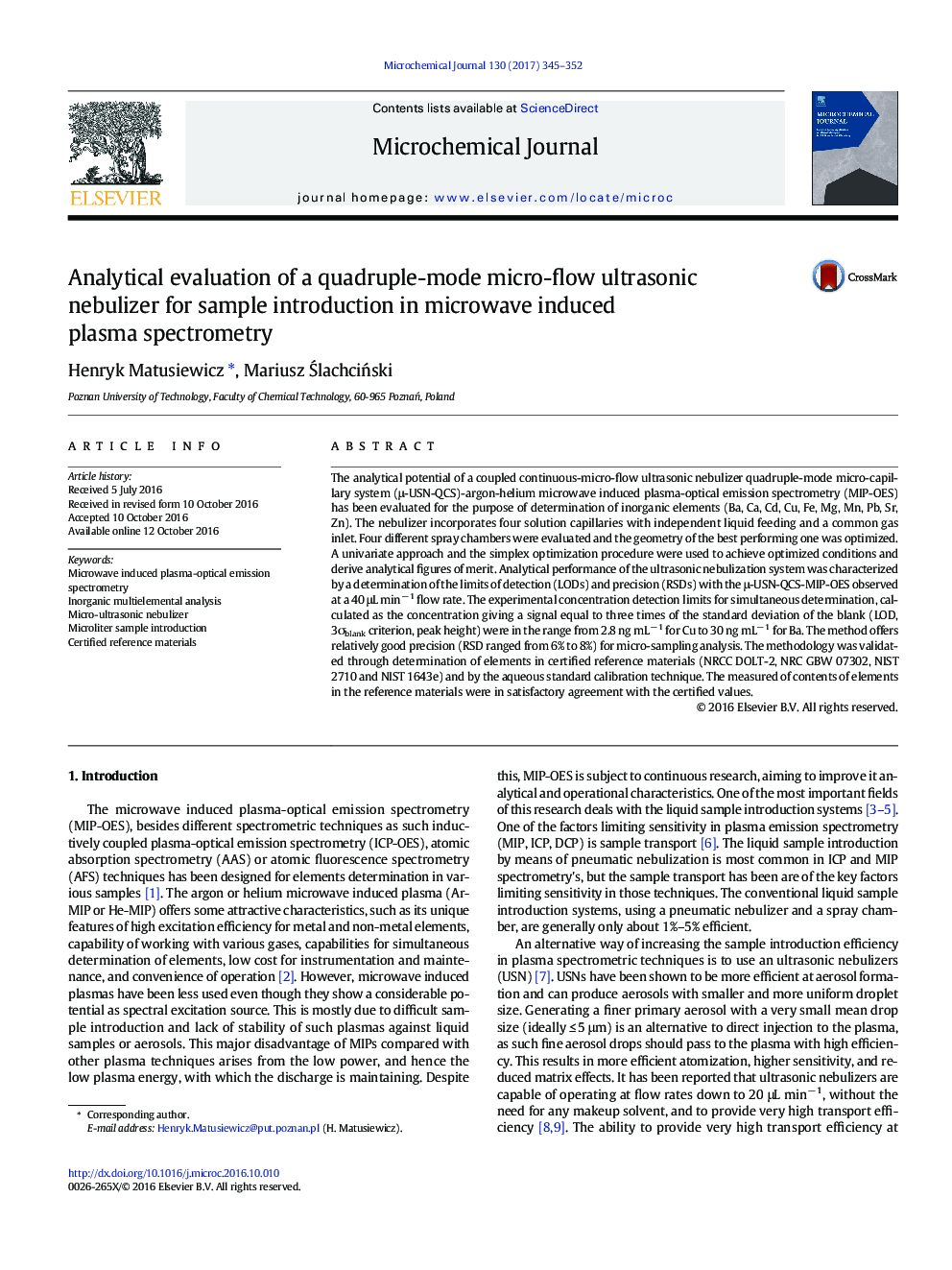| Article ID | Journal | Published Year | Pages | File Type |
|---|---|---|---|---|
| 7641276 | Microchemical Journal | 2017 | 8 Pages |
Abstract
The analytical potential of a coupled continuous-micro-flow ultrasonic nebulizer quadruple-mode micro-capillary system (μ-USN-QCS)-argon-helium microwave induced plasma-optical emission spectrometry (MIP-OES) has been evaluated for the purpose of determination of inorganic elements (Ba, Ca, Cd, Cu, Fe, Mg, Mn, Pb, Sr, Zn). The nebulizer incorporates four solution capillaries with independent liquid feeding and a common gas inlet. Four different spray chambers were evaluated and the geometry of the best performing one was optimized. A univariate approach and the simplex optimization procedure were used to achieve optimized conditions and derive analytical figures of merit. Analytical performance of the ultrasonic nebulization system was characterized by a determination of the limits of detection (LODs) and precision (RSDs) with the μ-USN-QCS-MIP-OES observed at a 40 μL minâ 1 flow rate. The experimental concentration detection limits for simultaneous determination, calculated as the concentration giving a signal equal to three times of the standard deviation of the blank (LOD, 3Ïblank criterion, peak height) were in the range from 2.8 ng mLâ 1 for Cu to 30 ng mLâ 1 for Ba. The method offers relatively good precision (RSD ranged from 6% to 8%) for micro-sampling analysis. The methodology was validated through determination of elements in certified reference materials (NRCC DOLT-2, NRC GBW 07302, NIST 2710 and NIST 1643e) and by the aqueous standard calibration technique. The measured of contents of elements in the reference materials were in satisfactory agreement with the certified values.
Keywords
Related Topics
Physical Sciences and Engineering
Chemistry
Analytical Chemistry
Authors
Henryk Matusiewicz, Mariusz ÅlachciÅski,
